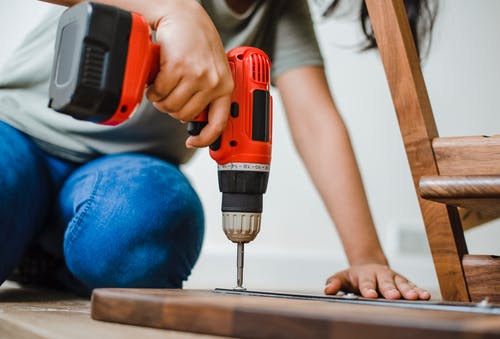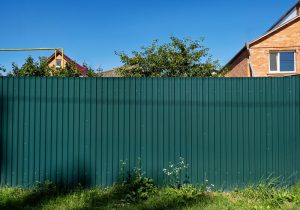What to Do When Fire Damage Occurs in Your Home

Walking through your home in the aftermath of a fire can be heart-wrenching. The smell of smoke lingers, the sight of charred belongings is overwhelming, and the daunting task of cleanup lies ahead. But take a deep breath and focus on one step at a time. Navigating through this ordeal is tough, yet with some guidance and determination, you can regain some semblance of normalcy.
In this article, we will walk you through some practical steps to tackle the fire damage in your home and get back on track.
Ensure Safety First
Your first step should always be to ensure that everyone is safe. This means doing a quick headcount to make sure all family members and pets are accounted for. Even after the fire is out, dangers may lurk in the form of weakened structures, electrical hazards, and toxic fumes. It’s essential to wait for the green light from authorities before you enter your home again to avoid putting yourself in harm’s way. Remember, structures can be rebuilt, but lives cannot be replaced.
Reach Out to Your Insurance Company
After a fire, it’s crucial to contact your insurance provider to start the recovery journey quickly. Your prompt action influences how soon you can move past the chaos and back to normalcy.
Here’s how you should proceed:
- Report the Incident: Notify your insurer immediately after ensuring everyone’s safety.
- Details Matter: Offer a detailed account of the damage; this aids in a thorough assessment.
- Documentation: Collect photos or videos as evidence of the damage for your claim.
- Policy Review: Go over your insurance policy with an agent to understand your coverage.
- Adjuster’s Role: Cooperate with the insurance adjuster’s visit to evaluate the extent of the damage.
- Guidance on Restoration: Seek recommendations from your insurer for reputable restoration services.
- Temporary Living Arrangements: If needed, ask about coverage for living expenses during home repairs.
Your insurance company will be an indispensable ally, covering costs per your policy and providing direction during restoration.
Securing Your Property
After a fire, your home may be exposed to the elements or to people who may want to take advantage of the situation. It’s crucial to secure your property to prevent further loss. This can mean boarding up windows, putting a tarp over damaged roofs, and fencing off the property if necessary. Doing so will also deter any potential vandalism, theft, or unwanted visitors looking to exploit your property’s vulnerable state.
Handling Smoke and Soot Damage
Beyond the evident destruction caused by flames, smoke and soot can permeate your home, causing hidden damage and lingering odors. Cleaning up smoke and soot is a job for professionals who know how to do the job effectively while conserving as much of your belongings as possible. They have the expertise and equipment necessary to clean, deodorize, and restore items that might seem irreparable to you.
Restoration and Clean-Up Process
In the wake of a fire, the restoration and clean-up process kickstarts your journey to reclaiming your space.
Here’s a snapshot of how the journey unfolds:
- Assessment: Experts evaluate the extent of the damage to create a targeted plan of action.
- Debris Removal: The initial step involves clearing out damaged materials and debris from your home.
- Water Removal: Any water used to extinguish the fire is extracted to prevent mold and secondary water damage.
- Cleaning: Soot and smoke residues are meticulously removed, and surfaces are sanitized.
- Repair and Rebuild: The focus shifts to repairing structures and restoring your home to its pre-fire condition.
- Coordination: Professionals manage the entire process, providing peace of mind during a stressful time.
With the expertise of restoration specialists, your home’s recovery is thorough and efficient. Companies like PuroClean can help by offering a compassionate and comprehensive approach, ensuring your home’s revival is in capable hands. Their seasoned teams come equipped with both the technical skills and the dedication necessary to manage such critical tasks, smoothly guiding you through every phase of the restoration process.
Caring for Your Health and Well-being
Experiencing a house fire is a traumatic event that can have lasting emotional impacts. It’s important to look after your psychological well-being during this difficult time. Seek support from friends, family, or professional counselors who can help you process your emotions and cope with the stress and trauma of the event. Taking care of your mental health is just as important as taking care of the physical restoration of your home.
Salvaging Personal Belongings
Amidst the chaos, some of your personal belongings may have survived the fire. Figuring out what’s salvageable is a daunting task but one that can bring comfort as you recover items that carry sentimental value. Restoration professionals have methods to clean and restore some items you might think are lost forever. They’ll handle your possessions with care, understanding the emotional value they hold.
Planning and Reconstruction
Recovering from fire damage presents an opportunity for innovation in rebuilding your home.
Here’s a quick guide to navigating the reconstruction phase:
- Assessment: Work with professionals to assess the structural damage and plan necessary repairs.
- Design: Collaborate with architects and designers to create a layout that matches your current needs and desires.
- Upgrades: Consider implementing modern features or energy-efficient systems.
- Personal Touch: Take the opportunity to personalize your space, making it feel even more like home.
- Resources and Support: Utilize online resources, like visiting websites like puroclean.com, for expert advice and support throughout the process.
Embracing this period as a chance for a fresh start can turn a situation of loss into one of hope and new beginnings.
Keeping Your Home Fire-Safe in the Future
As you rebuild, it’s important to take measures to prevent future fires. This might involve installing better smoke alarms, learning more about fire safety, and being diligent about potential hazards in your home. Make fire safety a priority to protect your home and loved ones from another devastating event.
Conclusion
Recovering from fire damage is a complex process that encompasses ensuring safety, proceeding with insurance claims, securing your property, and dealing with smoke and soot. It involves salvaging what you can and involves emotional healing. Remember, fire restoration is not something you should do alone; seek out professional guidance and utilize the resources at your disposal. With the right support and a step-by-step approach, you can make the best out of a challenging situation and restore not just your home but your life as well.


